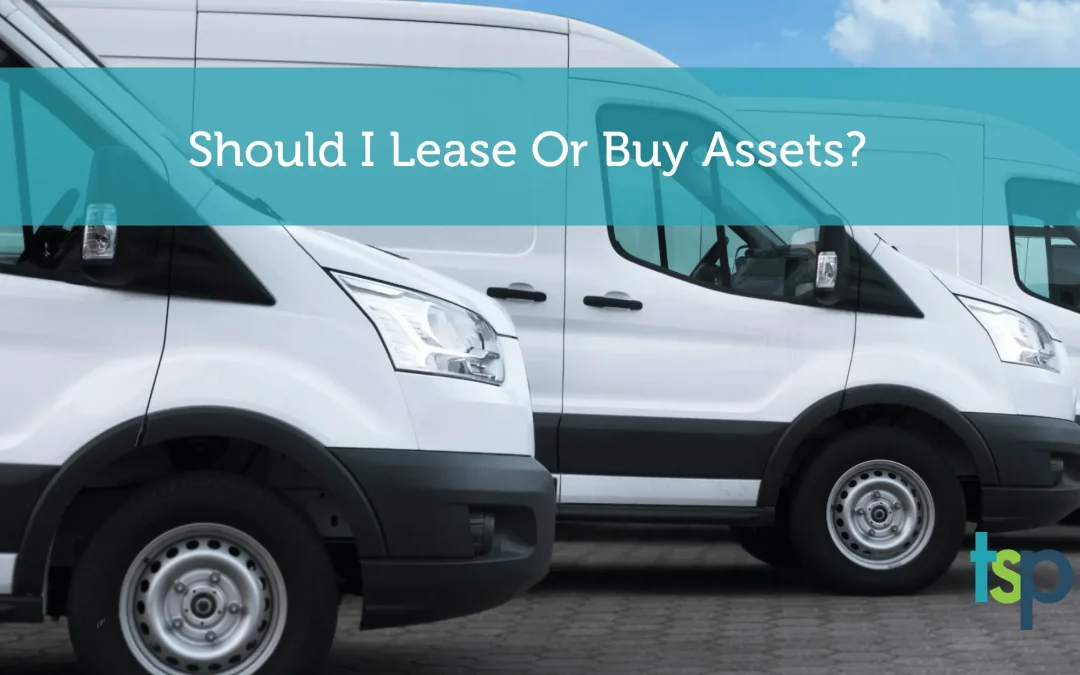When your business needs equipment, vehicles, or other assets, you have two main options: buying or leasing. While buying may seem like the obvious choice, leasing can offer some unique benefits—though it’s not without its drawbacks. Let’s break down the pros and cons to help you decide what’s best for your business.
TSP can help you review your current financial position, assess your available cash flow and look at your regular cost base to decide whether buying or leasing is the right thing for your business.
The Pros and Cons of Buying Assets for Your Business
When deciding whether to lease or buy, understanding the benefits and drawbacks of buying assets outright is crucial. Let’s take a closer look at the pros and cons of purchasing equipment or machinery for your business.
The Pros of Buying Assets
- Tangible Ownership
When you buy an asset, you own it outright, and it becomes part of your business’s balance sheet. This adds to your business’s capital value, increasing its overall worth. Plus, since you own the asset, you can claim depreciation or a capital allowance for tax purposes, offering potential tax benefits over time. - Long-Term Use
Owning an asset means you have full control over its use for the duration of its life. There’s no need to worry about making ongoing payments, as you would with a lease. If your business’s financial situation changes, you also have the flexibility to sell the asset and free up capital.
The Cons of Buying Assets
- High Upfront Costs
Purchasing an asset requires a significant initial outlay. This can strain your cash flow and divert funds away from other areas of your business, like marketing, staffing, or growth initiatives. It’s important to ensure that this investment will deliver long-term value before committing. - Potential Need for Financing
If your business doesn’t have the liquid cash available, you may need to seek additional funding. Asset finance or loans are available, but they add liabilities to your balance sheet and tie your business into a loan agreement. This can impact your business’s overall financial health and borrowing capacity.
And…why you might decide to lease the item.
The Pros of Leasing Assets
1. Lower Upfront Costs
Leasing allows businesses to avoid the significant initial outlay that comes with buying. Instead of paying for the asset in full, you spread the cost over a set period, freeing up your capital for other needs like inventory, marketing, or hiring.
2. Easier Cash Flow Management
Since leasing breaks the cost into smaller, predictable payments, it can make budgeting simpler. Businesses often find it easier to manage their monthly expenses, rather than dealing with large one-off purchases.
3. Access to the Latest Technology
Leasing provides businesses with the opportunity to upgrade equipment regularly. This is especially beneficial for industries that rely on cutting-edge technology, such as IT or manufacturing. When your lease term ends, you can lease newer models rather than being stuck with outdated equipment.
4. Potential Tax Benefits
In Australia, leasing may offer some tax advantages, as lease payments could be tax-deductible as operating expenses. However, the benefits depend on your specific situation, so it’s always wise to consult your accountant.
5. Reduced Maintenance and Repair Costs
Many leases come with service and maintenance packages, meaning your business can avoid unexpected repair bills, keeping things running smoothly without additional financial stress.
The Cons of Leasing Assets
1. Higher Long-Term Costs
While leasing reduces upfront costs, it often ends up being more expensive in the long run compared to purchasing outright. After making all the payments, you won’t own the asset, which can be a downside if you plan to use it for a long time.
2. No Ownership at the End of the Lease
Leasing means you’re essentially renting the asset. Once the lease term ends, you have to either renew the lease, return the equipment, or possibly purchase it for a residual value. If you need the asset long-term, buying might be the more cost-effective option.
3. Restrictions and Lack of Flexibility
Lease agreements can come with restrictions, like usage limits or specific conditions for returning the asset. This lack of flexibility can be inconvenient, especially if your business needs change over time.
4. Obligation to Keep Paying
Whether your business is thriving or facing difficulties, you’re locked into making lease payments for the entire term. If your needs change or you no longer need the asset, you’re still responsible for paying until the lease is up.
5. Creditworthiness Matters
Leasing may require a good credit history. If your business is newer or has a weaker credit profile, you may face higher interest rates or even be denied leasing options altogether.
So, Should You Lease or Buy?
Deciding whether to lease or buy depends on several factors: the type of asset, how long you need it, your cash flow situation, and how important owning the asset is to your business. For short-term needs or assets that require regular upgrading, leasing might make sense. But if you need something for the long haul and want to own it outright, buying may be the better choice.
At the end of the day, it’s about finding the right balance for your business.
Unsure which option is best for you? At TSP Accountants & Business Advisors, we help Australian businesses navigate financial decisions like leasing or buying assets. Contact us today for tailored advice that fits your specific needs. Whether you’re looking to optimise cash flow or invest in long-term growth, our team is here to guide you every step of the way.

